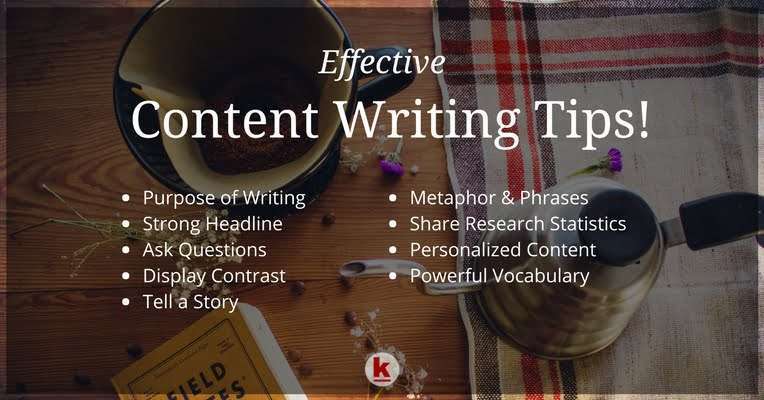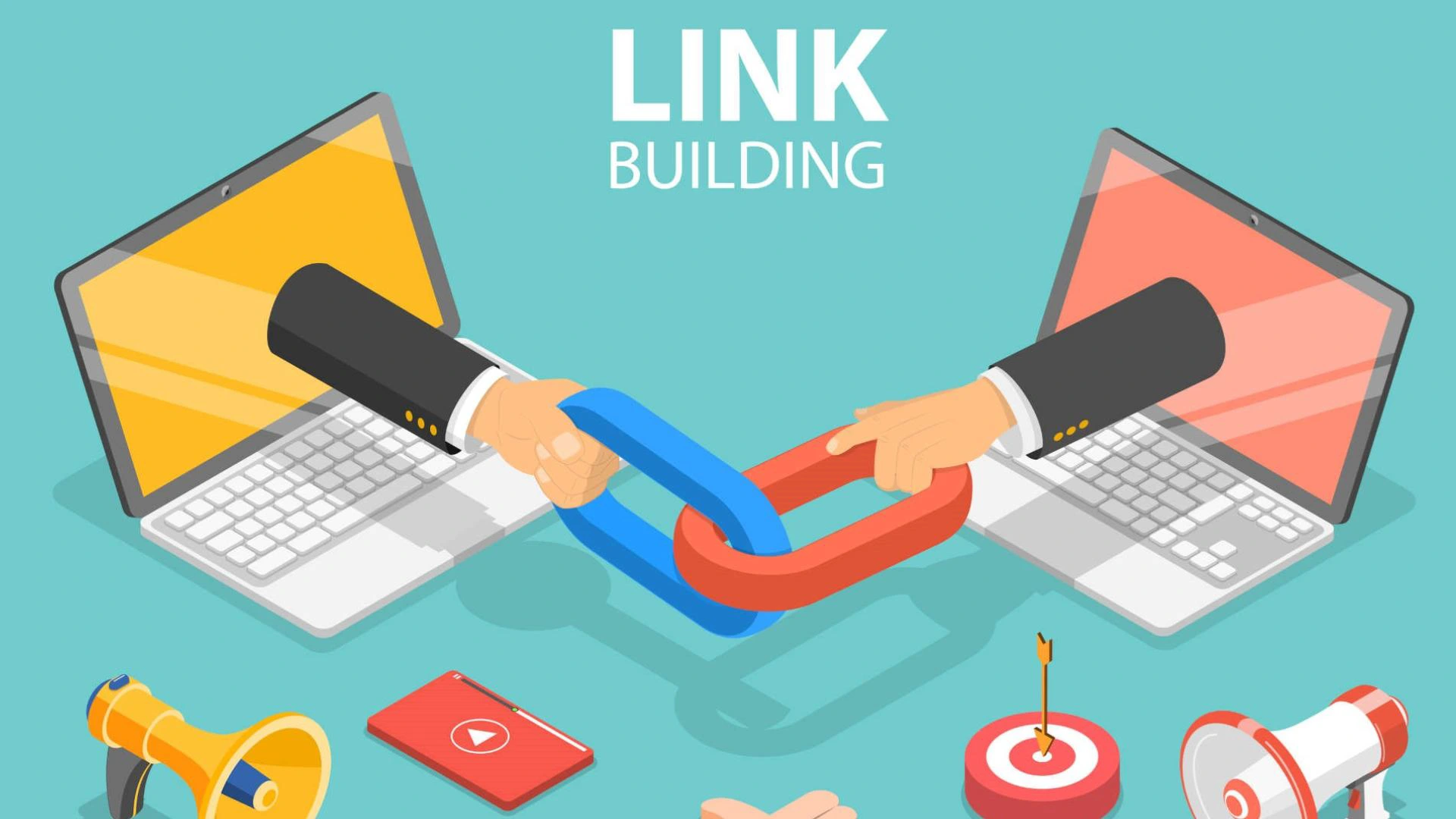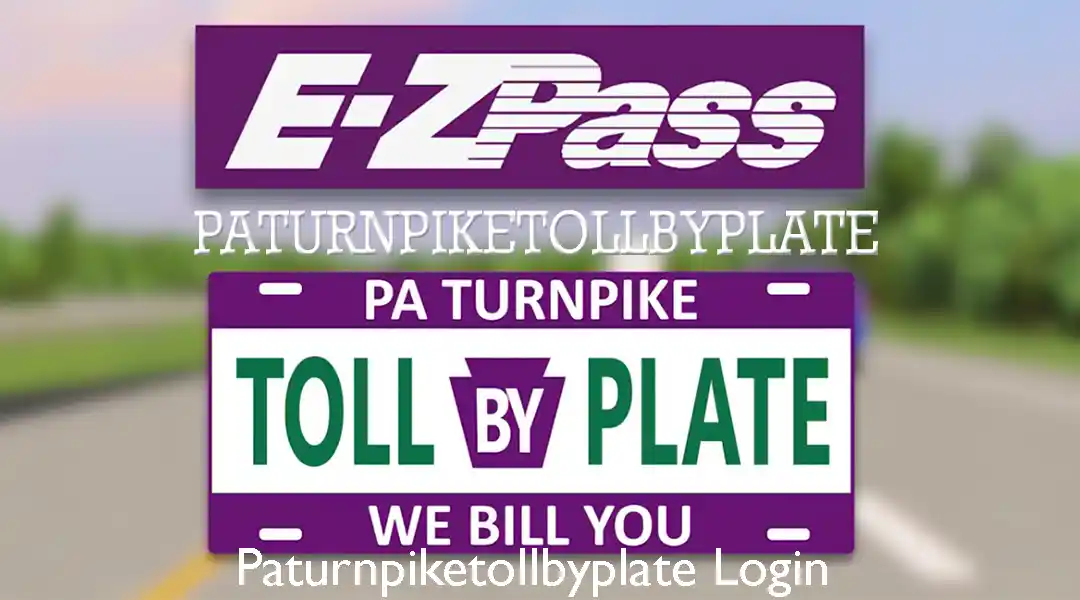SEO
Website Content Tips & Tricks: Top 20 Do’s And Don’ts

Table of Contents

If you’re building a website, one of your main objectives should be to produce appealing and intriguing content for it. If this is your first time (or second or third – learning the talent of great content writing takes time!) you may be unclear of what you should and should not write. Successful website content appeals to both internet users and search engines, yet catering to both may be difficult.
Don’t be alarmed! We’ve put up a list of the top 20 do’s and don’ts for writing website content that improves the look, readability, and SEO performance of your new site. When you use these suggestions to write and compile your website content, you’ll be able to reap the benefits of good content writing once your new site is up!
For web pages, Here are 20 website content writing tips that can help you create high-quality content.

Don’t…
- DON’T plagiarize Please, please, please.
Copying material from other websites, no matter how tempting it may seem, may result in your site being punished or deleted from search engines. Maintain your copy/paste restraint and devote a few more minutes to creating your own unique material. After all, your business is unique, right? It merits unique content.
- Avoid using long phrases.
You’ll be rewarded if you keep it short and sweet, which appeals to both people and search engines. If you have a lot to say, make sure it’s broken up into scannable sections.
- Avoid writing too intricate stuff.
Using four-syllable terms 18 times in a paragraph may make you feel wiser, but most people will not appreciate your linguistic prowess. Keep the wording simple enough for the typical person to understand.
- Avoid writing large paragraphs of text.
If at all feasible, keep paragraphs to 80 words or 4-5 lines in length. Bullet points, lists, and graphics may help break up long paragraphs and make them easier to skim.
- Don’t go on and on about the same thing.
Visitors to your website are there to learn about the subject matter, and they don’t want to be bombarded with the same concepts or terms every time they want to learn something new.
- Don’t try to sell too much of your goods or service.
A precise mix of promotional and non-promotional information is required for high-quality content authoring. Sure, the goal of the website is to advertise what you’re selling, but that doesn’t mean you should overwhelm visitors with buy or sign-up requests. Before asking whether they’re interested in becoming a customer, provide them with useful, educational information that they may appreciate.
- Keep in mind who you’re trying to reach.
Although you may be well-versed in the issues covered by your website content, bear in mind that your clients may be less so. Make sure your material speaks to your visitors on their level.
- Do not utilize photographs for which you do not have a legal license.
You might be sued if you use unlicensed photos from the internet and post them on your site without permission or purchase. So, unless getting sued seems like fun, don’t utilize photographs that aren’t your own.
- Avoid using poor anchor text.
Do not just include a link with the words “Click here!” if you want your website visitors to click on a link in your content. Use detailed and enticing anchor language in your anchor text.
- DON’T COPY AND PASTE!
Write your own content to prevent having your website suffer as a result of your inability to be creative. To ensure that your material is unique, use a duplicate content checking tool.
Do…
- Understand the purpose of each page.
Do you want a consumer to buy a product on a certain page of your website? Then make sure the material on that page is crafted to send them on the proper path while also persuading them that the product is worthwhile.
- Make use of CTAs (calls to action) (CTAs).
A call to action (CTA) is a button, link, picture, or other visual that invites a site user to participate or become a client. If you publish fantastic content but don’t include a call-to-action, your material will struggle to convert visitors into customers.
- Create a plan.
Or, at the absolute least, have a solid, planned plan for what you’ll write on each web page.
- Make a human-like sound!
Nobody loves information that sounds like it was plagiarised from a dictionary or was told by a robot. As far as your personality permits, be approachable and down-to-earth. Your site visitors will enjoy the personal connection you make with them and will be more inclined to respond to your calls to action.
- Use bullet points, numbered lists, headings, and other similar techniques.
These will assist to break up the material and make it more readable and fascinating.
- Provide the information that your target market needs.
What are the ways in which your services or goods can benefit a customer? What makes them the most effective on the market? How can a visitor locate the precise item or information they seek? Your website visitors expect to discover answers since you’re the expert!
- Check to see if your paragraphs are well-organized.
Each paragraph should only include one concept. Each paragraph should begin with the issue and then stay on topic without rambling or offering extraneous details.
- Ensure that the material on your web pages can be swiftly scanned.
While still conveying the point. Important information should be displayed first and foremost. Most website visitors only stay on a page for a few seconds, so make sure they see what they’re searching for without feeling obligated to read everything.
- After you’ve finished writing a page of material, go over it again.
Look for any problems or missing information you wish to rectify. Better still, read the page content out loud, a technique that will help you check if the language sounds the way you desire and if there are any faults that your brain continues ignoring.
- Stick to your content deadlines!
To ensure that content and web design integrate seamlessly, make sure your web design team is aware of the sort of content you’re delivering. Your website will seem nicer and will be released on schedule if you provide your material on time.
CLICK HERE: FOR MORE READING ABOUT UPDATED TIME
Conclusion:
Bonus! If you’re still stumped on how to produce website content or have run out of ideas, searching is a great place to start. Look for websites with the material you like and use it as a source of inspiration. Just make sure you don’t plagiarise anything!
SEO
The Benefits of Using Local SEO Packages for College Education Website

Table of Contents
In today’s digital era, establishing a robust online presence is a game-changer for businesses and institutions alike.
For colleges and educational institutions, it’s about ensuring that future students can effortlessly access details about their programs, campus vibe, and application procedures. A powerful method to boost visibility is through local SEO packages.
These custom strategies are all about enhancing a website’s visibility in local search results, making it a breeze for nearby students to explore the college offerings.
Let’s delve into the numerous advantages that local SEO packages can unleash for college education websites in this piece!
What is Local SEO?
Before diving into the benefits, let’s briefly understand what local SEO is all about. SEO involves strategies. They aim to improve a website’s visibility in search results.
Local SEO, specifically, targets local audiences by optimizing the website for location-based searches. This includes optimizing keywords. It also means creating local content. And making sure information is consistent across online platforms like Google My Business.
Enhanced Visibility in Local Searches
A major perk of using local SEO packages for a college website is that it amps up your visibility in local searches. So, when students are looking for colleges nearby, a well-tuned website ensures your school pops up right where they can see it.
This boost in visibility increases your chances. It helps you catch the attention of local students. They are exploring educational opportunities close to home. With a solid local SEO plan, your site can be the top choice for those seeking higher education options in your area.
Targeting Local Audiences
In today’s digital age, many students begin their college search online. And with the rise of mobile devices, more and more students are using their smartphones to research and compare colleges. This makes it crucial for a college education website to have a strong online presence. It should cater specifically to local audiences.
By using keywords and making local content, you can target local students better. This will increase their chance of choosing your school.
Consistent Information Across Platforms
Another key aspect of local SEO is making sure your info is consistent across different online platforms like Google My Business. This means having your school’s name, address, phone number, and hours all in line.
Keeping things accurate and consistent boosts your search rankings. It also gives potential students a smoother search experience.
Targeting Local Keywords
When talking about local SEO, it’s super important to use specific keywords related to your college and where it’s at. This means mentioning the city or town your campus is in, along with any cool landmarks or attractions nearby.
For instance, if your college is in Boston, you could throw in keywords like “Boston colleges” or “unis near Fenway Park.” These focused keywords will draw in more local peeps to your site and up the odds of turning them into potential students.
Targeted Traffic and Higher Conversion Rates
We focus on local keywords and tweak our content for specific areas. Those local SEO packages bring in super-targeted traffic to the college website. Unlike the usual traffic, these visitors are really keen on what the institution has to offer, boosting the chances of conversion.
Whether they’re signing up for a campus tour, grabbing an application form, or asking for more info, they’re genuinely interested. This approach increases conversion rates. It also focuses on potential students, making our marketing better.
Cost-effectiveness and High Return on Investment (ROI)
Investing in local SEO packages is a smart move for colleges and schools. Unlike old-school ads like print or billboards that cost a lot and don’t reach many people, local SEO gives you more bang for your buck.
You can focus on specific areas, so your digital marketing money goes further by reaching the right folks with the right info at the right moment. Plus, the lasting perk of better online visibility keeps paying off, making it a solid bet for college marketing budgets.
Strengthened Online Reputation and Credibility
An optimized local SEO strategy doesn’t just boost search rankings but also helps build a solid online reputation for the college. The school keeps popping up in local searches. It keeps its info current on different online platforms. This shows students that it’s legit and dependable.
Good reviews, accurate business listings, and interesting local content all boost the college’s reputation. They do so in the community. They make students and parents feel more trusting and confident.
Seamless Integration with Other Marketing Efforts
Local SEO isn’t alone. It blends with other digital marketing to build a full strategy. This awareness nurturing for schools helps them build a brand. This includes social media, email marketing, and even traditional methods like print ads.
For example, local SEO can drive traffic to the college’s website. There, visitors can learn more about the school and its programs through well-designed landing pages. The conversion rate then increases as interested prospects are directed toward enrollment or application forms.
Adaptability to Mobile and Voice Search Trends
As mobile devices and voice-activated assistants are on the rise, local search is getting more important than ever. Local SEO packages are there to keep up with these trends, making sure the college website stays top-notch for mobile and voice searches.
By serving up the right info, which is easy to find on smartphones and smart speakers, colleges can grab the interest of potential students. They use these gadgets for their searches.
Community Engagement and Connection
When we talk about optimizing for local search, it’s not just about boosting rankings. It’s all about building connections within the community. With local SEO packages, colleges can get involved with local businesses, organizations, and influencers, strengthening those community ties.
The teamwork boosts the college’s visibility. It also creates chances for partnerships, sponsorships, and outreach efforts. These help both the institution and the whole community.
Leveraging the Power of Local SEO Packages
In a nutshell, local SEO packages bring tons of perks to college websites. Think boosted visibility, targeted traffic, and keeping costs in check. Plus, they help foster community connections, which is pretty cool. When colleges jazz up their online presence for local searches, it’s like rolling out the red carpet for potential students nearby.
It’s all about spreading the word, building trust, and showing off their top-notch status in the community. The digital world always changes. Colleges must dive into local SEO to stand out today. It’s a must in today’s cutthroat educational scene.
SEO
Cracking the Code: The Insider Secrets of Successful Content Syndication Companies

Table of Contents
Content syndication companies help you share your stories and articles across many websites. This means more people can see what you write without needing to visit your site first. It’s like having your writing published in lots of different newspapers all at once.
By doing this, your work reaches a bigger audience quickly and easily. You don’t have to work as hard to get noticed. Content syndication companies make sure your voice is heard far and wide.
In this article, we will unveil the secrets of successful content syndication.
Picking Quality Rather Than Quantity
It’s critical to put quality before quantity when it comes to content sharing. It is important to carefully consider which platforms to publish on, even though syndicating content across many channels can expand your reach. You want a syndicator who will take your work, not just to any place, but to locations where people are interested in it.
Choosing quality over quantity means picking the best spots for your stories to shine. It’s important to place your content where it will stand out rather than just putting it everywhere. This ensures that the proper people hear your message, making your efforts worthwhile.
Adopting a Customer-Centric Approach
Focusing on the audience comes first when you take a customer-centric approach. It’s about realizing their needs and identity. When content syndication providers strive to address audience concerns rather than just disseminate material for their own sake, they perform better.
You can ensure that your content resonates with your audience by keeping them in mind. Consider the queries they might have and how your material addresses them. Using this tactic, content syndication services become useful resources for your readers that encourage them to return for more.
Utilizing Data-Driven Strategies
In the world of content sharing, knowing what works is key. Here’s where data-driven tactics are useful. You may assess the performance of your material across many websites by examining syndication ratings.
This feedback is like a guide. It tells you what your audience loves and what doesn’t hit the mark. With this knowledge, you can make smarter choices about where and what to share next.
Data-driven decisions help you focus your efforts. This way, you’re not guessing, you’re using real numbers to get better results.
Making Use of SEO’s Power
When someone searches online, SEO or Search Engine Optimization works like a magic tool to aid them find what you’ve written. When you use SEO correctly, your stories pop up first, grabbing readers’ attention. By thinking smart about keywords and how you write, you can make your work easy to find.
Using keywords in your stories is super important, especially for “syndicated content SEO.” When your stories are shared on different websites, these keywords help more people discover what you’ve written. It’s like leaving a trail of breadcrumbs online that leads right to your work.
The better you are at SEO, the more folks will read your stuff. Think about what words people use to find stories like yours and use them in your writing. This way, SEO helps your wonderful stories get the audience they deserve.
Collaborations and Strategic Partnerships
Teaming up with the right partners allows your content to travel further. When you find others who share your goals, you can help each other out. It’s like joining forces to make sure more eyes see your stories.
Choosing to collaborate can open new doors for your content. Look for groups or people who talk to the audience you want to reach. Sharing with them can make your message stronger and go further.
It’s about getting your stories into the hands of those who will love them. Partnerships can introduce your content to people in ways you alone might not manage.
Adopting Multi-Channel Distribution
Adopting Multi-Channel Distribution is like sharing your story in many places at the same time. It’s smart because different people like to read in different spots, whether it’s on blogs, social media, or big websites. This way, no matter where they hang out, they can find what you write.
Using product information syndication makes sure that details about what you’re selling or talking about get seen by more folks. It’s a great way to show off your work and make some new friends.
Multi-channel distribution maximizes your online presence. By having more channels, you’re able to capture the attention of various demographics. This method also helps in building brand awareness, as your content is seen repeatedly across different platforms.
Investing in Content Creation Tools
Investing in good tools to make content helps you create stuff that looks great and catches the eye. With better tools, you can easily share your work on content syndication platforms and get more people to see it.
When you use these tools, making changes or updates becomes a breeze. It means you can keep your stories fresh and exciting without a lot of hassle. When your stories look and sound professional, more folks want to read them, growing your audience even bigger.
With the right tools, you can create high-quality content that will surely stand out. This includes graphics, videos, and other visual elements that add depth and value to your work.
Retaining Uniformity
You can make sure that your audience knows what to anticipate from you by being consistent with the information you produce. Your readers develop a habit of connecting with your work when you share your stories on a regular basis. By following this regimen, you can build a devoted readership that eagerly awaits your next publication.
Being consistent involves not only posting regularly but also producing high-caliber, well-written content. If readers find your writing engaging, they will return for more of the same.
The Impact of Content Syndication Companies
Content syndication companies can help you reach a bigger audience and make your work shine even brighter. By choosing quality over quantity, adopting a customer-centric approach, utilizing data-driven strategies, making use of SEO’s power, collaborating with strategic partners, adopting multi-channel distribution, investing in content creation tools, and retaining uniformity.
With the right methods and strategies, you can achieve success in content syndication and get your stories heard by a wider audience. So go ahead and share your stories with the world! You never know whose life you might touch with your writing.
SEO
Link Building Strategies – How to Maximize the Benefits for Your Business

Table of Contents
There are many strategies you can use to build links. Some are riskier than others, but all have potential for success. However, it would help if you were wary of using any shortcuts, which can lead to a Google penalty. It’s also important to focus on the quality of your content. A step-by-step guide or a helpful resource will attract more links than a silly nut-shot compilation.
Link building is a long-term strategy
A long-term link-building strategy by experts at Vazoola is essential for your business because it helps you build trust and improves page rankings. This strategy involves creating valuable content that encouraging your audience to link to your website. It also includes internal links to your site, which help spread equity across your pages and establish an information hierarchy for visitors. Ideally, your link-building efforts should focus on quality over quantity. Getting high-quality links increases your domain authority, which indicates how authoritative Google thinks your website or web page is. It also increases your website’s organic search traffic. To achieve this, you can use a variety of strategies. For example, you can reach out to other websites in your niche and promote content or products you have recently created. You can also use competitor research to find out what topics are popular online and create new content that is more in-depth than your competitors.
It’s a competitive strategy
The more links you have, the higher your site ranks. However, it’s important to note that the quality of your links matters just as much as their quantity. If you build many low-quality links, you could be penalized by search engines. A successful link-building strategy requires dedicated research and analysis to identify opportunities, goals, and resources. This includes performing keyword research, backlink analysis, and competitor analysis. Analyzing the relationships and opportunities across your niche and the general linking environment is also essential. Content creation is one of the most effective ways to increase your website’s visibility. This can include how-to guides, lists, videos, podcasts, and infographics. It is a great way to gain exposure and trust from your target audience. In addition, it can help build a strong brand and establish your business as an expert in the field.
It’s a time-consuming strategy
If you’re new to digital marketing, it’s essential to understand the value of creating high-quality links. Building quality links can enhance your website’s ranking on search engine result pages, increasing traffic. However, link-building requires time and effort. The most effective link-building strategies involve generating informative and relevant content that appeals to your target audience. Domain authority increases when other websites link back to yours and link to it themselves, increasing it further. A higher domain authority increases your chances of ranking well on search engine results pages. Guest posts for other industry websites are another effective way of increasing domain authority, as they will reach a wider audience and generate backlinks from these sites.
It’s a budget-friendly strategy
When used wisely, link-building can be an effective and budget-friendly strategy. It positions your pages at the top of search engine results, which brings in more qualified website traffic and leads to a higher ROI for your business. This traffic converts to prospects and eventually into customers. It also helps your brand awareness and boosts organic search results. This is because backlinks from other websites show relevance in organic search and help you rank higher. Link building involves contacting other websites in your niche and asking them to link to you. It also includes creating content that is useful and relevant to your audience. This will ensure that people see you as an expert in your industry, which can lead to long-term relationships with potential customers. These relationships are often based on mutual benefits, which is the key to success for your business. Moreover, it will increase your website’s overall domain authority and improve page scores.
-

 Travel4 years ago
Travel4 years agoThe Family of Kirk Passmore Issues a Statement Regarding the Missing Surfer
-

 Technology4 months ago
Technology4 months agoManyroon: The Key to Unlocking Future-Proof Business Solutions
-

 Cryptocurrency1 year ago
Cryptocurrency1 year agoBest Tips For Cryptopronetwork com Contact 2024
-

 Technology3 years ago
Technology3 years agoPaturnpiketollbyplate Login & Account Complete Guide Paturnpike.com
-

 Apps & Software2 years ago
Apps & Software2 years agoFapello 2023: Social Media Platform for NSFW Content
-

 Law3 years ago
Law3 years agoShould I Hire a Lawyer For My Elmiron Case?
-

 Business4 months ago
Business4 months agoCoyyn.com Gig Economy: Smart Contracts and Fair Payments for Freelancers
-

 Business4 months ago
Business4 months agoAcumen: The Key to Smart Decision-Making and Success






